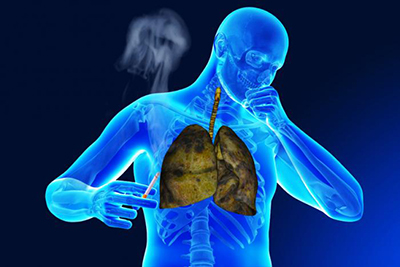
Source: www.medicalnewstoday.com
In managing shortness of breath due to asthma or related symptoms, the practice in the emergency department is often uniform across the country. Patients who attend unannounced, ‘walk-in’ is the medical lingo, with symptoms suggestive of a sudden asthma attack will be directed to the asthma bays for immediate treatment. These patients are often nebulised after being assessed and diagnosed with acute asthma. However, these so called ‘frequent flyers’ of asthma bays did not only consist of acute asthma patients but also breathing difficulties mimicking asthma as a result of smoking. A systematic review study on management of smoking-related illness at an emergency department reveals more than 25 million smokers are present yearly. Therefore, a large number of cases seen in the emergency department were smoking induced.
The emergency department is a busy place to begin with. Knowing that smoking causes a number of respiratory health concerns, having a medical condition exacerbated by smoking does not bode well with healthcare providers. Frustrating to some healthcare providers like nurses is the inability at times to intervene at that crucial moment to avoid another attack and subsequently another visit. As a consequence, the patient will be our next client, comfortably seeking treatment again and again using this fast track approach, the emergency department. By not intervening also, we are indirectly providing positive reinforcement to the patient that what he or she is doing in not wrong and allow him or her to continue smoking which is against good health sense.
Intervention at the emergency department is good place to start. We as emergency personnel should thus play a vital role in smoking cessation intervention and take the lead in offering brief cessation counselling immediately after the treatment. The current practice is all the patients with a history of heavy smoking and frequent visits to the emergency department are referred for counselling to quit smoking and subsequently followed-up in the nearest primary health clinic for further treatment. This patient, however, might have less motivation to go for smoking cessation if their immediate problem was worked out after receiving the treatment in the emergency department. If an explanation on the negative consequences leading to the asthma attack or shortness of breath was provided during the emergency attack, it might increase the chances for the patient to quit smoking. Indeed, this frightful experience might be just that little bit more to tip the balance towards quitting as compared to showing the pictures of the respective illness including breathing difficulty.
It is understood that delivery of smoking cessation counselling is important, but it is not always practical in the emergency department due to limited time and priority to focus on clients with life-threatening conditions. Nevertheless, there is always a mechanism in order to ensure that healthcare delivery system works well for having a healthy society. Hence, emergency department needs to take initiatives to have a comprehensive guideline for implementing smoking cessation counselling to walk-in patients. Regardless whether the patient is discharged after receiving treatment or referred to admission, an initial counselling given by the emergency personnel is crucial. The emergency department as well can initiate treatment of smoking cessation and continue follow-up with coordination in primary healthcare centre.
Smoking cessation counselling and treatment should be commenced immediately and not solely done after the patient has fully recovered from the distress. Late counselling and treatment will reduce the possibility for the patient to quit smoking. Emergency personnel should inform smokers that regular attendance to the emergency department’s asthma bays might put others in life-threatening conditions due to limited space available for accessing immediate treatment.
Dr. Mohd Said Nurumal is a registered nurse and lecturer at University Islam Antarabangsa Malaysia. He obtained his PhD recently and his field of interest is in emergency medicine nursing. Dr. Said is also a member of the NARCC.
[This article belongs to The Malaysian Medical Gazette. Any republication (online or offline) without written permission from The Malaysian Medical Gazette is prohibited.]
